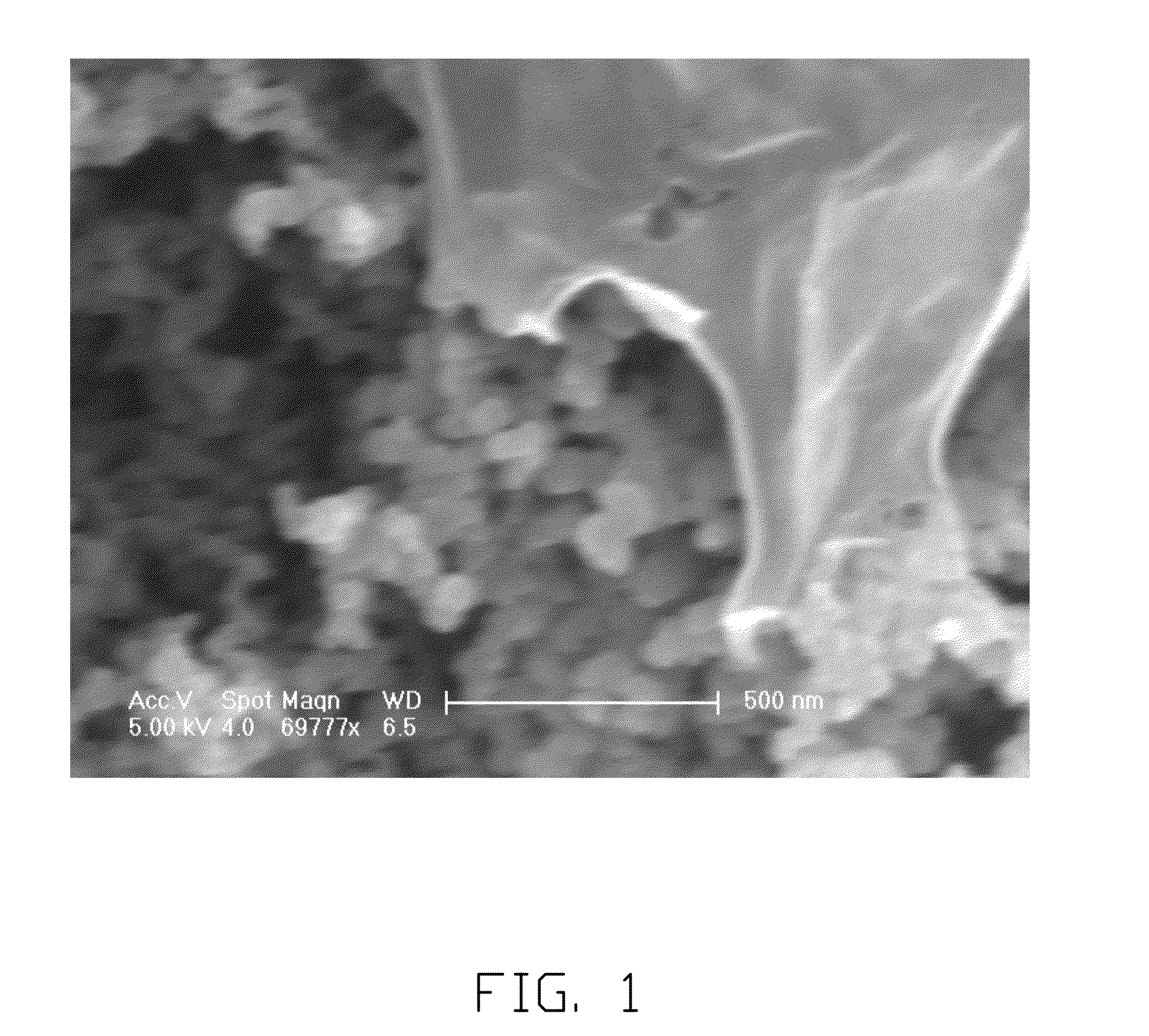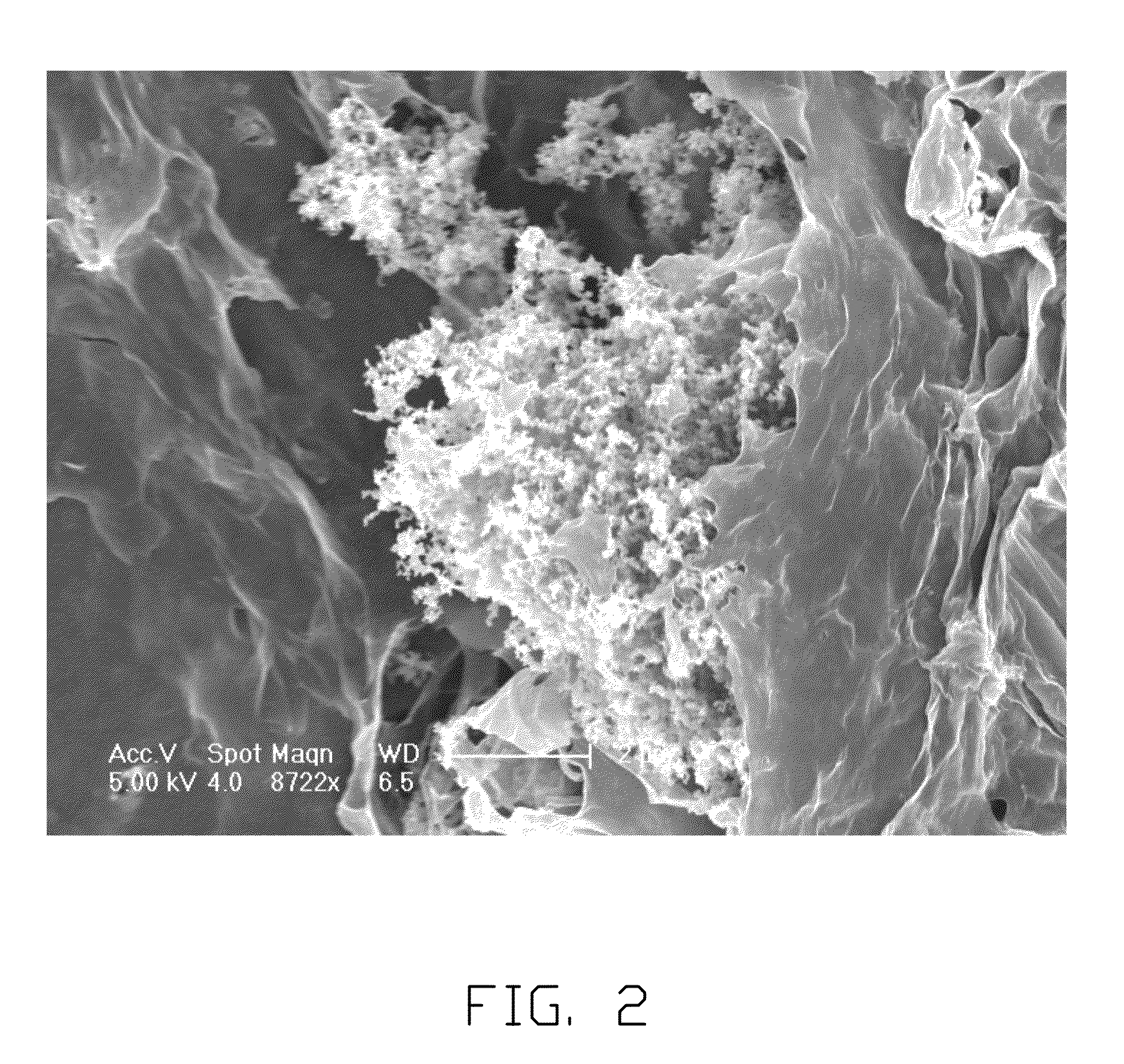Method for making graphene
- Summary
- Abstract
- Description
- Claims
- Application Information
AI Technical Summary
Benefits of technology
Problems solved by technology
Method used
Image
Examples
example 1
[0026]The lithium chlorate is dissolved in the PC to form the electrolyte solution. The molar concentration of the electrolyte solution is about 1.5 mol / L. The natural flake graphite having the particle diameter of 1 micron, the metal lithium having the powder form and the electrolyte solution are mixed together to form a mixture liquid. The mixture liquid is then heated to about 190° C. under high pressure in the reactor. The heating period is 1 hour. The metal lithium and the graphite are reacted with each other by heating to form the graphite intercalation compound. The graphite intercalation compound is supersonic dispersed to form the graphene suspended in the electrolyte solution. The dispersing power is about 1500 watt. The dispersing period is about 40 minutes. The graphene suspending in the electrolyte solution can then be separated out by centrifugal separation method. The separated graphene is dried by natural drying. Referring to FIGS. 1 and 2, the SEM image of the graph...
example 2
[0027]The lithium chlorate is dissolved in the THF to form the electrolyte solution. The molar concentration of the electrolyte solution is about 0.5 mol / L. The natural flake graphite with a particle diameter of about 8 microns, the metal lithium in powder form, and the electrolyte solution are mixed together to form a mixture liquid. The mixture liquid is then heated to about 200° C. under high pressure in the hydrothermal reactor. The heating period is about 1.5 hours. The metal lithium and the graphite react with each other with heat to form the graphite intercalation compound. The graphite intercalation compound is supersonic dispersed to form the graphene suspended in the electrolyte solution. The dispersing power is about 600 watts. The dispersing period is about 120 minutes. The graphene suspended in the electrolyte solution can be separated out by a centrifugal separation method. The separated graphene is dried by a natural drying method.
example 3
[0028]The lithium chlorate is dissolved in the DME to form the electrolyte solution. The molar concentration of the electrolyte solution is about 2 mol / L. The natural flake graphite with a particle diameter of about 50 microns, the metal lithium in powder form, and the electrolyte solution are mixed together to form a mixture liquid. The mixture liquid is then heated to about 300° C. under high pressure in the hydrothermal reactor. The heating period is about 10 hours. The metal lithium and the graphite react with each other with heat to form the graphite intercalation compound. The graphite intercalation compound is supersonic dispersed to form the graphene suspended in the electrolyte solution. The dispersing power is about 250 watts. The dispersing period is about 30 minutes. The graphene suspending in the electrolyte solution can be then separated out by centrifugal separation method. The separated graphene is dried by natural drying.
[0029]Depending on the embodiment, certain st...
PUM
 Login to View More
Login to View More Abstract
Description
Claims
Application Information
 Login to View More
Login to View More - R&D
- Intellectual Property
- Life Sciences
- Materials
- Tech Scout
- Unparalleled Data Quality
- Higher Quality Content
- 60% Fewer Hallucinations
Browse by: Latest US Patents, China's latest patents, Technical Efficacy Thesaurus, Application Domain, Technology Topic, Popular Technical Reports.
© 2025 PatSnap. All rights reserved.Legal|Privacy policy|Modern Slavery Act Transparency Statement|Sitemap|About US| Contact US: help@patsnap.com


